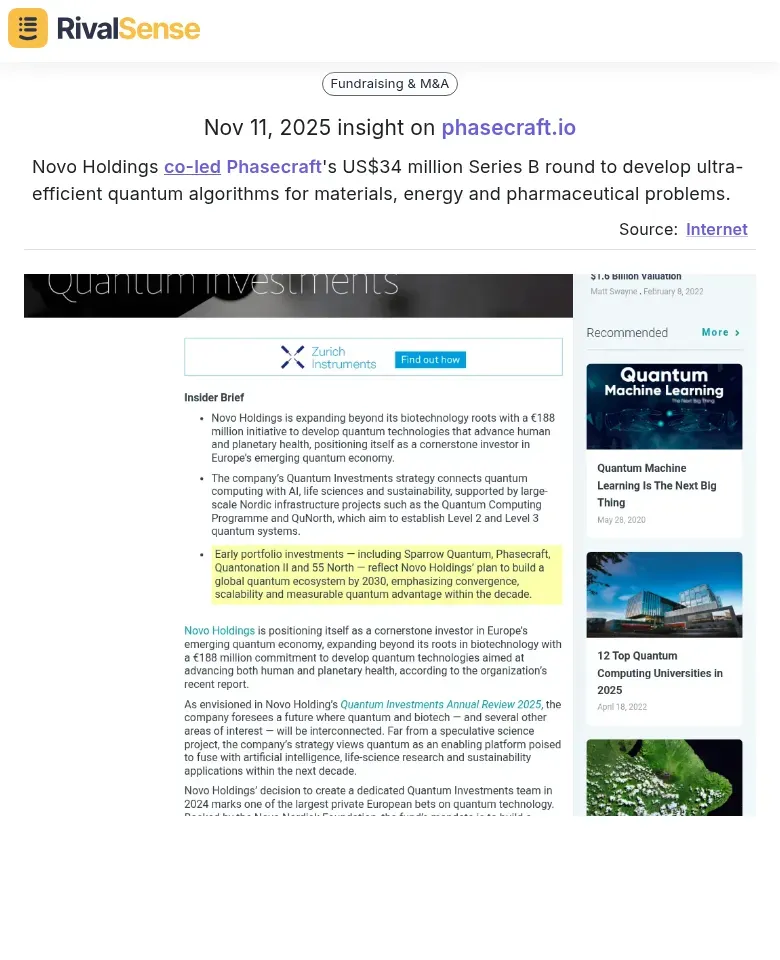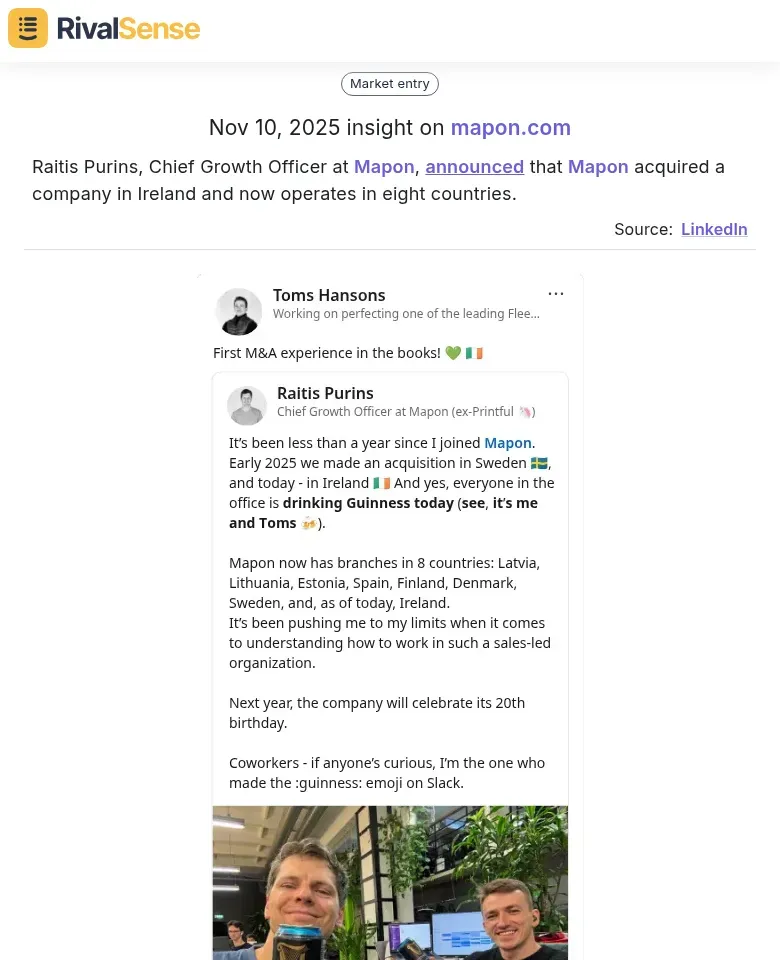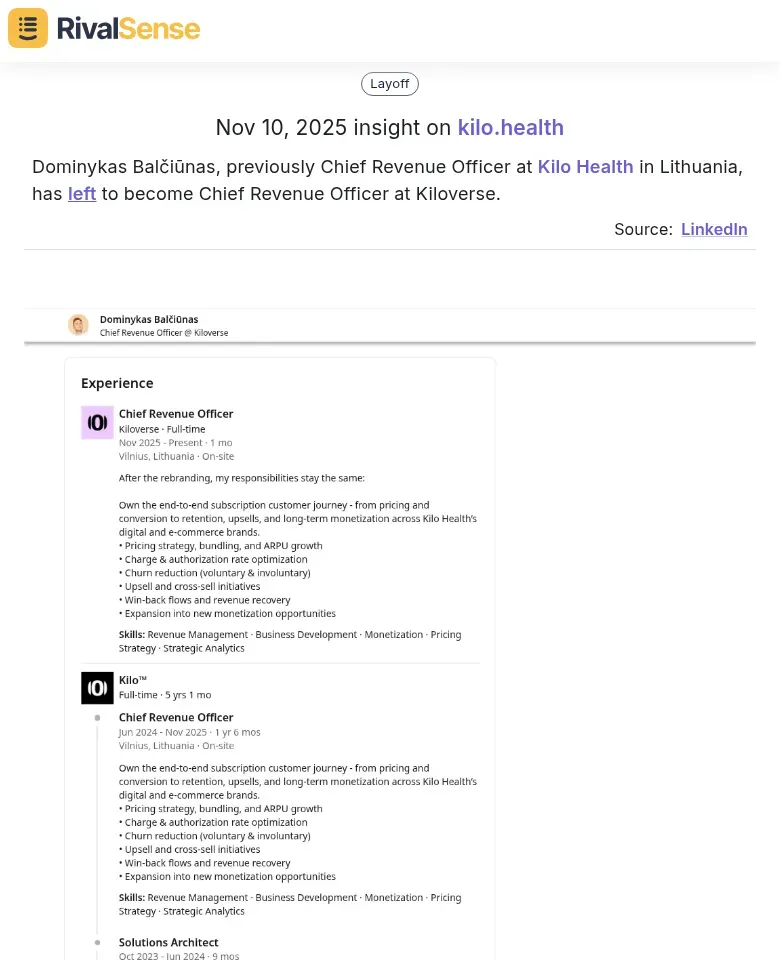How to Benchmark Against Competitors: A Practical Guide for B2B Leaders
By [Your Name], Content Marketing Professional at RivalSense
Competitor benchmarking is essential for any business aiming to stay ahead, but it's often done poorly—leading to wasted resources and misguided strategies. In this post, I'll guide you through practical steps to benchmark against competitors effectively, with actionable tips, checklists, and real-world examples. By focusing on context and strategy, you can turn comparisons into growth opportunities tailored for founders, business owners, entrepreneurs, and CEOs of B2B companies.
Why Competitor Benchmarking Matters (and Where It Goes Wrong)
Competitor benchmarking helps you understand your market position and identify areas for improvement, but many businesses approach it without proper context. This can result in misguided decisions that drain resources and stifle innovation. For instance, blindly copying a competitor's feature or pricing without understanding their rationale is like buying a tool you don't need—it wastes time and money.
In business, this happens when leaders compare metrics like headcount, pricing, or marketing spend without digging into the "why" behind the numbers. If a rival has fewer finance staff, it could signal efficiency, outsourcing, or cash flow issues. Effective benchmarking starts conversations that drive smart strategy, not ends them with superficial comparisons.
Key Takeaway: 🧠 Always ask "why" when you spot a difference—context turns data into actionable insights.
Practical Steps to Benchmark Against Competitors
Benchmarking requires a structured approach to ensure it's insightful and actionable. Follow these steps to compare your business against competitors without losing sight of your unique goals and market dynamics.
Step 1: Define Your Benchmarking Goals
Start by clarifying what you want to achieve with benchmarking, as vague goals lead to irrelevant data. Are you comparing pricing, product features, customer satisfaction, or operational efficiency? Clear objectives help you focus on metrics that align with your business strategy and drive real impact.
Checklist for Goal-Setting: ✅
- Identify 2-3 key metrics (e.g., market share, innovation rate, customer retention).
- Align goals with business objectives like increasing ROI or reducing costs.
- Prioritize areas where competitors are outperforming or underperforming.
💡 Tip: Use tools like RivalSense to track competitor product launches and pricing updates, helping you set goals based on real-time market shifts.
Step 2: Identify Your Competitors
Not all competitors pose the same threat or offer the same lessons, so categorizing them ensures you're benchmarking against the right players. Direct competitors target the same audience with similar solutions, while indirect ones solve customer problems differently, and aspirational competitors inspire long-term growth.
Example: A B2B SaaS company might benchmark against a direct tool rival, an indirect consultancy, and an industry leader for innovation ideas.
Hint: 🎯 Tools like RivalSense monitor 80+ sources, including social media and registries, to spot emerging competitors through event participations or partnerships.
Step 3: Gather Data Systematically
Collecting accurate data from multiple sources prevents cherry-picking and ensures a comprehensive view. Rely on competitor websites, customer reviews, industry reports, and social media to gather insights on pricing, features, and market presence.
Data Sources to Consider: 📊
- Competitor websites and product demos.
- Customer feedback on platforms like G2 or Capterra.
- News articles and financial statements.
- Social media channels for real-time updates.
🛠️ Practical Advice: Automate data collection with RivalSense to receive weekly reports on competitor moves, saving hours of manual research and reducing errors.
Step 4: Analyze with Context
Comparing data side-by-side is useless without context, so always factor in business models, target audiences, and external factors. For example, if a competitor lowers prices, determine if it's a short-term promo or a strategic shift to capture a new segment.
Checklist for Contextual Analysis: ✅
- Note differences in geographies, business models, and customer bases.
- Consider timing elements like economic conditions or seasonal trends.
- Look beyond numbers to understand underlying strategies and motivations.
Example: If a rival has fewer IT staff, investigate whether they use automation—this could reveal operational efficiencies you can adopt.
Step 5: Learn and Adapt
Use benchmarks to identify gaps and opportunities for innovation, rather than just copying others. Ask what competitors do better, where you can differentiate, and how to leverage your strengths to stay ahead in the market.
Tip: 📈 Track your own performance over time as an internal benchmark; this helps measure real progress and fosters continuous improvement.
Common Pitfalls to Avoid
Benchmarking can backfire if not done carefully, so steer clear of these common mistakes. Over-reliance on numbers without context or ignoring internal benchmarks can lead to wasted efforts and missed opportunities.
- ❌ Copying Without Understanding: Imitating a competitor's strategy blindly, like adopting a feature that doesn't fit your audience, can harm your brand.
- ❌ Over-Reliance on Numbers: Data alone doesn't reveal intent—always seek the "why" behind metrics to avoid misinterpretation.
- ❌ Ignoring Internal Benchmarks: Compare teams within your organization to promote healthy competition and uncover inefficiencies.
Real-World Competitor Insights and Strategic Value
Seeing actual competitor moves in action can illustrate how benchmarking informs strategy. Here are examples from RivalSense insights, each highlighting why tracking specific types of data is valuable for B2B leaders.
-
Funding and Partnerships Insight:

Novo Holdings co-led Phasecraft's US$34 million Series B round to develop ultra-efficient quantum algorithms for materials, energy, and pharmaceutical problems.
Why it's valuable: Tracking funding rounds reveals a competitor's growth trajectory and strategic alliances, helping you anticipate new market entries or innovation shifts that could impact your business. -
Acquisitions and Expansion Insight:

Raitis Purins, Chief Growth Officer at Mapon, announced that Mapon acquired a company in Ireland and now operates in eight countries.
Why it's valuable: Monitoring acquisitions and geographic expansion alerts you to competitive threats in new markets, allowing you to adjust your strategy to defend or capitalize on emerging opportunities. -
Management Changes Insight:

Dominykas Balčiūnas, previously Chief Revenue Officer at Kilo Health in Lithuania, has left to become Chief Revenue Officer at Kiloverse.
Why it's valuable: Keeping an eye on leadership moves helps predict strategy shifts, as new executives often bring fresh approaches that could disrupt your competitive landscape.
How RivalSense Enhances Your Benchmarking
RivalSense simplifies competitor tracking by automating data collection from 80+ sources, including company websites, social media, and registries. Our weekly email reports cover product launches, pricing updates, event participations, partnerships, regulatory changes, management shifts, and media mentions, ensuring you stay informed without manual effort.
Why It Matters: With RivalSense, you benchmark with rich context, turning raw data into actionable insights that drive informed decisions and strategic growth.
Conclusion
Effective competitor benchmarking isn't about keeping up with others—it's about learning from them to refine your own strategy and outperform the competition. By following the practical steps outlined here and leveraging real-world insights, you can make data-driven decisions that align with your business goals.
Remember, comparison should inspire innovation, not imitation. Focus on what makes your B2B company unique, and use benchmarks as a tool to continuously improve.
Ready to streamline your competitor analysis? Try RivalSense for free at https://rivalsense.co/ and get your first competitor report today!
For more tips on competitive intelligence, explore our blog or connect with us on social media. Let's benchmark smarter, together.
📚 Read more
👉 Avoid These Key Account Management Mistakes in Clinical Research
👉 How Competitors Countered Lightdash's Strategic Partnership
👉 Facebook Competitor Insights Framework: Templates for Key Account Tracking
👉 How to Outsmart Vacation Rental Software Competitors with Feature Analysis
👉 Unlocking Growth Through Competitive Partnership Intelligence
